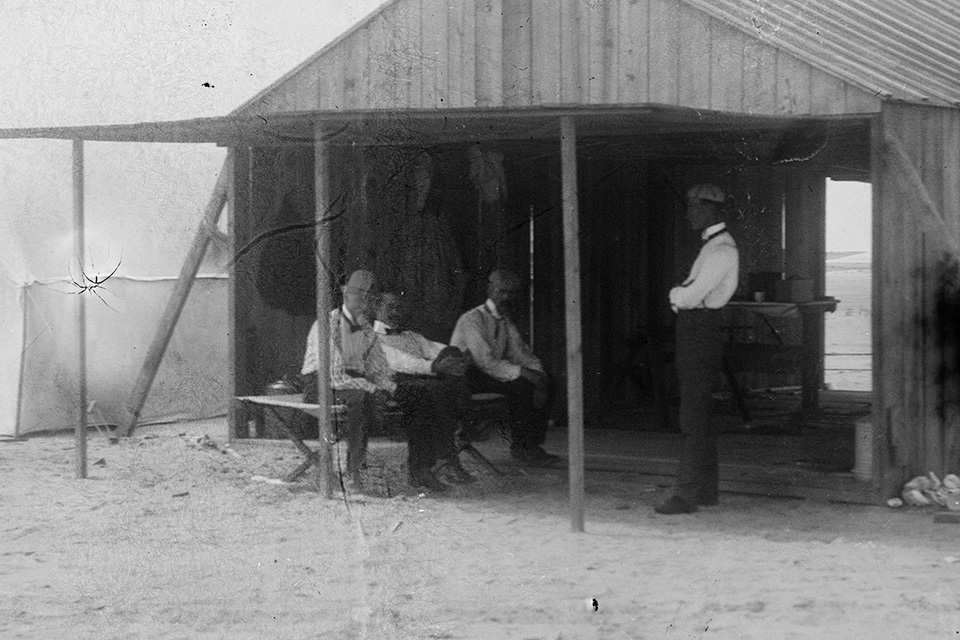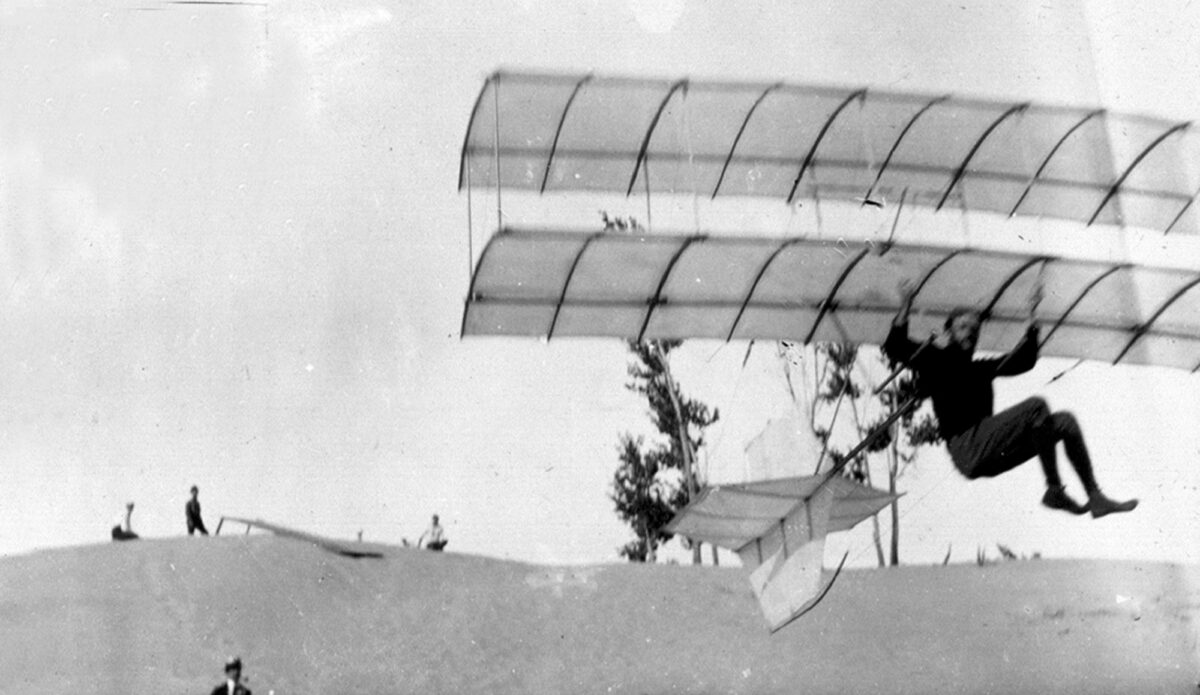Octave Chanute conducted from behind the scenes.
The letter, dated May 13, 1900, was astonishing in its directness, lacking even the customary salutation. “For some years,” it began, “I have been afflicted with the belief that flight is possible to man. My disease has increased in severity and I feel that it will soon cost me an increased amount of money, if not my life.” The author: Wilbur Wright. The recipient: Octave Chanute, at whose modest headstone in Peoria, Ill., I recently stood, pondering the serendipity of time and place and Chanute’s pivotal role in the first successful powered manned flight.
But for the whims of fate, Chanute, a wealthy Chicago businessman, might very likely never have set foot in America, let alone have been buried in Peoria. Born in 1832 in Paris, he immigrated to the United States at age 6 when his father accepted a position as vice president and history professor at Jefferson College, north of New Orleans.
Though Octave was precocious from the beginning, few could have foreseen his capacity to shape destiny. By age 17, the New York–educated prodigy had become a consulting engineer. His brilliant engineering triumphs included the design and construction of bridges and masterminding plans for the Chicago and Kansas City stockyards. His first bridge project was Peoria’s Illinois River rail bridge, and in 1869 he was also the architect of the Hannibal Bridge—the first to cross the Missouri River—as well as a score of others. His proprietary system for pressure-treating rail ties and telephone poles with creosote is employed to this day. The tenacious, intense Chanute also introduced the railroad date nail into the United States, a system of recording the age of railroad ties via date stamping the heads of nails.
Chanute worked his way through the ranks in the railroad business, from chainman (surveyor) for the Hudson River Railroad to railroad civil engineer to chief engineer of the Chicago and Alton Railroad. Chicago was his home for the last 21 years of his life.
In his twilight years, Chanute developed a consuming interest in gliding as well as other aviation experiments. This was a risky stance in an academic environment that largely ridiculed the idea of manned flight. But Chanute’s seminal 1894 Progress in Flying Machines was considered the definitive source for aviation wisdom. Those on the threshold of powered flight—among them the Wright brothers—eagerly petitioned for Chanute’s attention and counsel. So keen was the interest of both parties that Wilbur Wright’s first letter opened a veritable flood of correspondence, generating hundreds of letters in the course of a decade.

Despite their voluminous correspondence with Chanute, the Wrights did not retain copies of their letters. Fortunately Chanute cherished every scrap, and his engineering outlook and obsession with detail—and perhaps also his sense of a nascent world-changing development—have allowed historians to assemble a remarkably accurate record of the development of flight. Those documents are now part of the Library of Congress’ permanent collection.
Imagine Chanute’s passion in his role as friend, mentor and confidant of the Wright brothers. His participation was vigorous, though vicarious. At age 64, he was considered too old to fly. Yet beginning in the summer of 1896, his assistants tested gliders he had designed, carrying out their experiments at Dune Park, near Gary, Ind., on the southern shore of Lake Michigan. Eschewing secrecy, they were very public, and also very successful. More than 700 glider flights yielded a treasure trove of information, unlocking some of the vexing mysteries of the calculus of flight.
Chanute graciously shared with the larger aviation community the solutions to the aerodynamic riddles he solved, seeking no patents on his work. For example, his knowledge of bridge trussing was deftly applied to glider construction. He pioneered the strut-and-wire-braced wing structure, which became the standard in powered biplane aircraft. Chanute’s recommendations for an ideal place to test aircraft led to the Wrights’ selection of Kitty Hawk, N.C., for their flight trials. He himself visited them at their Kitty Hawk camp, as well as sending his assistants east to work with them.
Chanute also became a friend and financier of several other early aviation pioneers, among them Louis Mouillard of France, Otto Lilienthal of Germany and Samuel P. Langley, secretary of the Smithsonian Institution and a tireless experimenter in his own right. Chanute served as the selfless facilitator, the ardent catalyst who brought together disparate individuals and interests to help legitimize as well as orchestrate the dream of flight.
When Octave Chanute died in Chicago on November 23, 1910, Wilbur Wright delivered his eulogy, saying of his friend: “His labors had vast influence in bringing about the era of human flight…no-one was too humble to receive a share of his time. In patience and goodness of heart he has rarely been surpassed. Few men were more universally respected and loved.”
Originally published in the September 2008 issue of Aviation History. To subscribe, click here.





